Most of us who have been in the diamond industry for decades have witnessed the horror of a diamond that broke due to an impact event. These damages always originate in the girdle area. The reason for that is that a diamond is the most vulnerable at the girdle due to the thin nature of the girdle compared to the rest of the diamond.
Diamonds with thin girdles, inclusions and feathers are the most vulnerable. Figure 1 below shows damage caused on a modern Round Brilliant. The diamond was compromised at the area of the break due to the presence of inclusions.
Figure 1
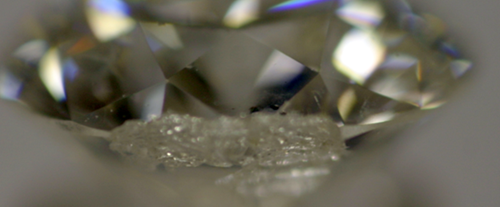
An Old European Cut diamond with a thin girdle which resulted in chips in three places.
Figure 2
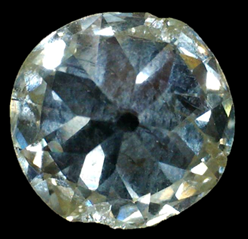
The diamond in Figure 3a is showing a lot of surface wear and chips on the girdle. Diamonds are the hardest of all substances. A lot of the damages are caused by careless treatment like throwing diamond jewelry into jewelry boxes containing other diamond jewelry. Diamonds need to be individually stored to prevent physical contact with other diamonds. Diamond in 3b shows what can happen under severe impact.
Figure 3a
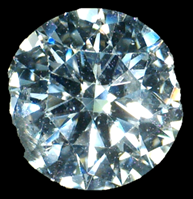
Figure 3b
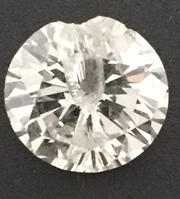
Having seen many diamond rings containing broken and chipped diamonds I observed one commonality. This became increasingly prevalent with the use of four prong baskets and tension settings which cause more of the girdles to be exposed. Six prong settings provide more protection to the girdles of diamonds than four prongs. The safest way yet is to set a diamond in a bezel setting. This has the draw back as less of the diamond is exposed, making the diamond look smaller.
I recently spear-headed a test to determine the effect of repeated impact on a four prong diamond ear stud consisting of a white gold basket containing a 0.50ct diamond. We assumed a 1.5m drop to correspond to the average distance of the earlobes of a North American female to the floor. To create the most extreme test environment we deployed a rotating tumbler fitted with coarse ceramic impact surfaces. The cadence of the tumbler was designed to present 12 impact events per minute, with the most direct hits possible.
The results were very surprising. After 100 impact events the prongs started to show some serious damage as per the image below.
Figure 4
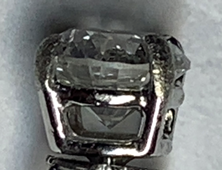
We continued the test until we reached the point of metal failure. At 3,069 impact events the diamond and basket separated as can be seen in the image below.
Figure 5
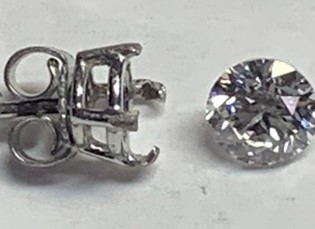
There was no damage to the diamond when checked under a binocular microscope. The girdle of the diamond which is medium to slightly thick, resisted the impact events without any chipping.
What we have learned from the testing experiment is that dropping your diamond jewelry, even on a ceramic floor will not result in damage unless the girdles are extremely thin. Following are the main causes for damage to diamond jewelry:
- Extreme impact like closing a car door on a hand wearing a diamond ring – ouch!
- Careless storing diamond jewelry together in a jewelry box. Diamonds can damage diamonds simply by contact.
- Very thin girdles which can chip easily.
- Not removing a diamond ring when hand washing and drying crockery and glasses will result in abrasion of facet junctions on the crown. This damage is gradual and takes place over many years.
- Not having enough protective metal in the setting. Six prongs and bezel settings are the safest options.
Key takeaways
Diamonds can tolerate a lot of abuse, yet they have their vulnerabilities. As suppliers we need to take care to ensure that the investments made by our clients are protected by selling diamonds that do not have extremely thin girdles or that have integrity problems. We also need to make sure that our clients are aware of how to care for their diamond jewelry to avoid unnecessary costly damages. Remember that only diamonds and severe impact can damage or destroy diamonds. We cannot foresee severe impact but all other forms of damages are preventable.


 RapNet Blog
RapNet Blog
![Diamonds 6[1][1]](/media/2120/diamonds-6-1-1.png)